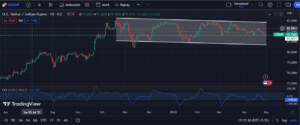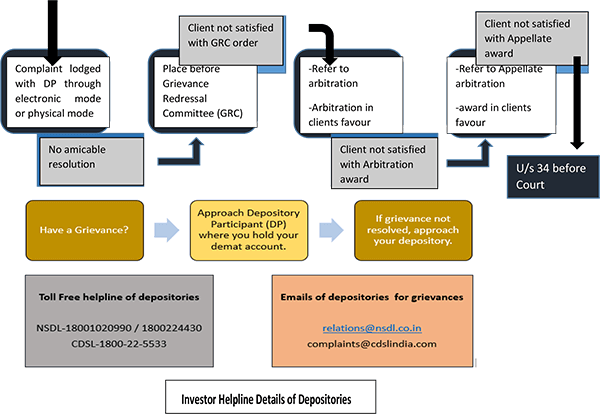India’s Currency Strategy: Smart or Shortsighted??
In recent times, there has been a lot of talk about countries like India and China devaluing their currencies. But what is the reason behind this move, and what is their agenda? Let’s take a closer look.
Competitive devaluation, also known as a currency war, is a tactic employed by a country’s central bank to intentionally decrease the value of its domestic currency through the implementation of expansionary monetary policies.
The term “currency war” was first used by Brazil’s Finance Minister Guido Mantega in 2010 to describe the competition among China, Japan, and the United States to have the lowest currency value.
Brazil was experiencing the negative effects of its record-high currency value, which was hindering its economic growth.
Besides, the fastest-growing economy of 2022, India has also emerged as the new player in the game of devaluation. Therefore, in this article, we are going to keep the reference of India, to understand “Devaluation of Currency”.
Understanding Currency Devaluation with an Example
Devaluing the rupee or INR means that one rupee is worth less than other currencies like the US dollar or the Euro. So if something costs one dollar, it would cost more, if the rupee is devalued.
Now, let’s say there’s a toy maker in India who makes really cool toys that kids all over the world would love to play with. But the toy maker is having a hard time selling the toys to other countries because they are too expensive compared to similar toys made in other countries.
So the toy maker decides to devalue the rupee, which makes it cheaper to buy things from India using foreign currencies.
As a result of the devaluation, the toy maker’s toys become more affordable to kids in other countries because the foreign currency they use to buy the toys can buy more rupees.
So more kids in other countries start buying the toy maker’s toys, which means the toy maker can sell more toys and make more money. It helps the toy maker’s business grow, which could lead to more jobs and better pay for its employees.
So, to put it simply, devaluing the rupee can help Indian toy makers and other businesses sell more things to other countries because their products become more affordable in foreign currencies.
Suppose an Indian company is exporting a product to the United States that costs 100 rupees to produce. If the exchange rate is 1 USD = 75 INR, then the cost of the product in US dollars would be:
100 rupees ÷ 75 INR/USD = 1.33 USD
Now, let’s say that the Indian government decides to devalue the rupee by 10%. That means 1 rupee would be worth 0.90 rupees compared to before. If the exchange rate changes to 1 USD = 83 INR, then the cost of the product in US dollars would be:
90 rupees ÷ 83 INR/USD = 1.08 USD
As you can see, the cost of the product in US dollars has decreased from 1.33 USD to 1.08 USD due to the devaluation of the rupee.
That means the product has become more affordable to American buyers and competitive in the US market. It could increase demand for the product and help the Indian company sell more of its products in the US.
Of course, these calculations are simplified, and there are many factors that can affect the competitiveness of exports in international markets.
But the basic idea is that devaluing the currency can make exports more affordable and competitive in foreign markets, which can help boost a country’s economy.
What Causes the Devaluation of Currencies?
One of the primary reasons for devaluing a currency is to improve a nation’s trade competitiveness. Countries can make their exports cheaper and more attractive to foreign buyers by devaluing their currency.
It can help these countries increase their market share and reduce trade deficits.
Another reason for devaluing a currency is to reduce sovereign debt. When a country’s currency is devalued, paying off loans denominated in foreign currencies becomes cheaper. It can help to reduce the burden of debt on the government.
However, devaluing a currency can have unintended consequences. It can lead to rising prices and reduced purchasing power for citizens. It can also spark a currency war between nations, where countries engage in a race to the bottom, devaluing their currencies to gain a competitive edge.
The recent Ukraine-Russia war has also played a role in currency devaluation. The conflict has led to geopolitical uncertainty and increased risk aversion among investors, which has led to a flight to safe-haven currencies like the US dollar, which has increased in value compared to other currencies.
In 2022, the US dollar’s value increased substantially compared to other currencies, including the Indian Rupee (INR). It was due to interest rate hikes by the US Federal Reserve, which made the dollar more attractive to investors.
Fed Rate Hikes 2022-2023: Taming Inflation
|
FOMC Meeting Date |
Rate Change (bps) |
Federal Funds Rate |
|
March 2, 2023 |
+25 |
4.75% to 5.00% |
|
Feb 1, 2023 |
+25 |
4.50% to 4.75% |
|
Dec 14, 2022 |
+50 |
4.25% to 4.50% |
|
Nov 2, 2022 |
+75 |
3.75% to 4.00% |
|
Sept 21, 2022 |
+75 |
3.00% to 3.25% |
|
July 27, 2022 |
+75 |
2.25% to 2.50% |
|
June 16, 2022 |
+75 |
1.50% to 1.75% |
|
May 5, 2022 |
+50 |
0.75% to 1.00% |
|
March 17, 2022 |
+25 |
0.25% to 0.50% |
|
Total |
+475 |
How Rupee Performed in 2022
During 2022, almost every Asian currency fell against US Dollar. The Chinese Yuan, Indonesian Rupiah, & Philippine Peso fell approx 9%. Also, the Malaysian Ringgit & South Korean Won declined by nearly 6% and 7%, respectively.
However, compared to other Asian currencies, depreciation in INR was substantial. INR fell to a lifetime low of 83.2 (Oct 2022) against the dollar during the year. The rupee with a fall of more than 10% has been considered as one of the worst-performing Asian currencies in 2022.
However, the RBI (Reserve Bank of India) heavily made efforts & intervened directly in the FX market to defend the rupee. The country’s foreign exchange reserves fall by more than $ 70 billion, since the beginning of 2022. The reserves stood at $ 562.81 billion as of 23rd December 2022.
Talking about the INR, Indian officials stated that INR has been relatively stable in recent times, but it is USD that is rising continuously. Overall, they wanted to say that – INR is not weakening, but USD is getting stronger.
Considering the current situation, despite some fluctuations in 2022, it performed well against the US dollar. However, the COVID-19 pandemic and the resulting economic slowdown have put pressure on the Indian economy, potentially leading to future currency devaluation.
The Technical Analysis of the Rupee
The current USD/INR exchange rate (as on April 29, 2023) is 81.7000. The primary trend in the USDINR currency pair appears to be bullish. However, the rupee has stabilized after falling 10+% in 2022. As of now, the pair seems to be travelling in a sideways channel since the end quarter of 2022.
Also, it is interesting to note that, the pair has created a strong support @ 81.6033, which the trend fails to break multiple times. The trend seems to be converging to form a descending triangle pattern as visible in the below chart.
The Future Outlook of the Rupee
As per the recent market news and announcements by US Fed, it is going to further raise interest rates possibly in May 20233. Rising inflation, rising interest rates and a combination of other factors have put additional strain on the U.S. debt ceiling, while the Fed has limited options.
All these developments will further devalue INR against USD. However, the market strongly believes that the Fed will quickly reverse its final rate rise within months.
The beginning of 2023 was stronger for Rupee, in terms of the dollar as the DXY Index (which tracks the USD against a basket of six other currencies) fell to a 6-month low of 100.8.
In February 2023, the RBI hiked the repo rate by a quarter percentage point (250 bps). Analysts are expecting this hike to be the final raise in the RBI’s current tightening cycle.
Conclusion
In conclusion, countries like India and China devalue their currencies to improve trade competitiveness and reduce sovereign debt. However, this move can have unintended consequences, leading to a currency war between nations.
With the recent geopolitical uncertainty and interest rate hikes, currencies like the INR have fluctuated. It remains to be seen how these factors will impact the future of currency devaluation.





